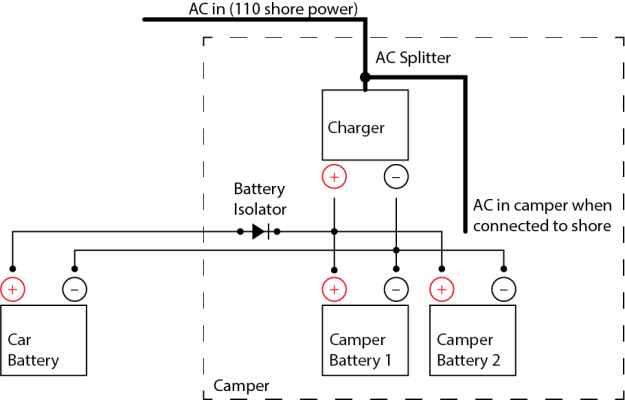UmkaAndHawk
Advanced Member
Anybody see any issues with the attached?
Basically, I added a second battery in parallel. They're the same battery, but one is a year newer. There's no diodes between them, or anything. Anybody think there's an issue with that? I didn't think so, but in case I'm being incredibly dumb!
This is in a Hawk Shell, so the isolator is the blue-sea diode that comes with.
Batteries are 8A24M AGM "Intimidator"
Charger is IOTA DLS-45
6 gauge wire.
The AC coming in is basically just a standard 110 receptacle which splits into two. One is occupied with the charger, the other is available for use when plugged in. I've never really been to a camp site with shore power and don't know if they typically have standard 110 hook ups or not, but it works at home at least, and without an adapter.
Basically, I added a second battery in parallel. They're the same battery, but one is a year newer. There's no diodes between them, or anything. Anybody think there's an issue with that? I didn't think so, but in case I'm being incredibly dumb!
This is in a Hawk Shell, so the isolator is the blue-sea diode that comes with.
Batteries are 8A24M AGM "Intimidator"
Charger is IOTA DLS-45
6 gauge wire.
The AC coming in is basically just a standard 110 receptacle which splits into two. One is occupied with the charger, the other is available for use when plugged in. I've never really been to a camp site with shore power and don't know if they typically have standard 110 hook ups or not, but it works at home at least, and without an adapter.

